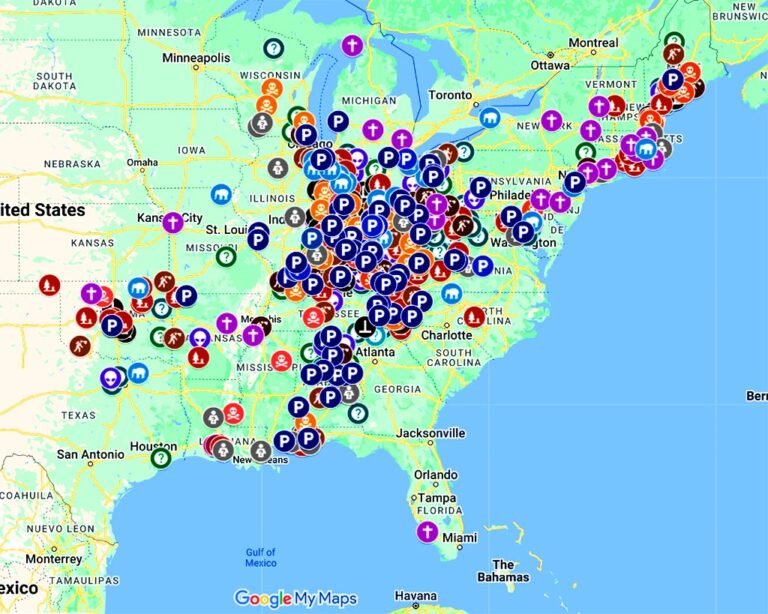What is Decision Paralysis?
Decision paralysis, sometimes called “analysis paralysis,” is a cognitive state where an individual becomes unable to make decisions due to an overwhelming number of choices or the complexity of a situation. This leads to inaction as the individual hesitates out of fear of making the wrong decision. While making decisions is a regular part of life, today’s fast-paced world—characterized by information overload and too many choices—has heightened this experience.
At its core, decision paralysis is related to cognitive overload, where the brain’s ability to process information becomes stretched beyond its capacity. This strain leads to mental exhaustion, impairing decision-making. Far from being just a minor annoyance, decision paralysis is a growing area of concern due to its links to mental health challenges, productivity loss, and reduced overall life satisfaction. Understanding its various types and contributing factors is critical in addressing its impact on both individuals and society.
Various Types of Decision Paralysis
There are a number of distinct forms of decision paralysis, each influenced by different cognitive and emotional factors.
Choice Overload: When individuals are presented with too many options, they may find it difficult to choose one. The overwhelming nature of multiple choices often leads to indecision, and in some cases, dissatisfaction with the choice that is eventually made.
Fear of Failure: Many individuals experience paralysis when they are overly concerned about making the wrong choice. This fear is often rooted in perfectionism or a heightened sense of personal responsibility, which can lead to chronic avoidance of decision-making.
Anticipated Regret: The anxiety of potentially regretting a decision, even before making it, can result in an inability to choose. This type of paralysis stems from the assumption that one will inevitably make a mistake or miss out on a better alternative.
Uncertainty: When individuals lack sufficient information or struggle with ambiguous outcomes, they may become paralyzed by indecision. This is particularly common in situations where the future consequences of a decision are difficult to predict.
Perfectionism: A rigid pursuit of the “perfect” decision can lead to endless rumination and delay in the decision-making process. People with perfectionistic tendencies often experience heightened stress, believing that there is a singular, ideal choice among many.
Social Influence: Decision paralysis can also be influenced by social pressures. When individuals are concerned about how others perceive their choices or are overwhelmed by conflicting advice, they may hesitate or avoid deciding altogether.
Each type of decision paralysis is exacerbated by specific psychological and environmental factors, including time pressure, emotional distress, cognitive load, and social expectations. The interplay of these variables can significantly impair an individual’s ability to make timely, confident decisions.
Factors Involved in Decision Paralysis
A number of key factors contribute to decision paralysis:
Information Overload: In an era of constant information access, people are often bombarded with more data than they can effectively process. This leads to difficulties in discerning relevant from irrelevant information, ultimately hindering decision-making.
Complexity of Choices: As decisions grow more complex, whether due to the number of variables, the uncertainty of outcomes, or potential long-term consequences, individuals may struggle to commit to a single course of action.
Emotional Investment: The more emotionally invested someone is in the outcome of a decision, the more likely they are to experience decision paralysis. Emotions like fear, anxiety, and regret intensify the psychological stakes of making a decision.
Lack of Experience or Expertise: When individuals lack knowledge or prior experience in a specific domain, they may feel unqualified to make a confident decision. This uncertainty can further reinforce hesitation and avoidance.
Social Comparison: Social norms and the opinions of others play a significant role in decision-making. The pressure to conform or make the “right” choice in the eyes of others can exacerbate feelings of paralysis.
Time Pressure: Ironically, while time constraints are often thought to accelerate decision-making, they can also lead to decision paralysis. The stress of needing to make a quick, high-stakes decision may result in freezing rather than action.
Fear of Responsibility: Many individuals experience paralysis due to the fear of being held accountable for the outcome of their decisions. This fear of responsibility is especially prominent in high-stakes situations where the consequences impact others as well. The weight of potential blame or negative outcomes can lead to avoidance of making a choice.
Fear of Obligation: Decision paralysis can also stem from a fear of obligation, where making a choice locks the individual into a future commitment. This fear arises when the individual anticipates that once a decision is made, they will be bound to ongoing responsibilities or expectations that may feel burdensome. The desire to avoid being trapped in long-term obligations or feeling overwhelmed by future duties can cause significant hesitation and avoidance in decision-making.
Harms of Decision Paralysis and Resulting Psychological Effects
Decision paralysis can negatively impact both mental and physical well-being. It interferes with an individual’s ability to function effectively and can lead to serious psychological effects, some of which can be long-lasting.
Increased Anxiety and Depression: Feeling trapped in indecision can create feelings of helplessness, leading to anxiety and, over time, depression. Constantly second-guessing oneself can result in a cycle of stress, further exacerbating the issue.
Loss of Confidence: Chronic indecision can chip away at a person’s self-esteem. As the individual becomes more paralyzed by decision-making, they may start doubting their ability to make choices at all, negatively impacting their personal and professional life.
Mental Exhaustion: The constant deliberation that comes with decision paralysis consumes mental energy, leading to fatigue. This exhaustion can impair memory, focus, and overall cognitive performance, making future decision-making even more difficult.
Delayed Life Progress: Indecision in important areas, such as relationships, career, or personal growth, can lead to missed opportunities and regrets, further reinforcing the cycle of paralysis.
Psychological Trauma from Past Decisions: In extreme cases, people may develop a heightened sense of anxiety after making high-stakes decisions that ended poorly. This can lead to avoidance of future decisions or even decision-related trauma.
Impact on Relationships: Indecision in personal matters, whether with a partner, friends, or family, can cause frustration and tension, damaging relationships over time.
Physical Health Effects: The stress and anxiety caused by chronic indecision can manifest physically through symptoms like headaches, sleep disturbances, and fatigue, ultimately compromising health.
Diminished Quality of Life: People suffering from decision paralysis may miss out on opportunities for personal growth and fulfillment, leading to a general sense of dissatisfaction and lack of control over their lives.
Key Point
Decision paralysis is not merely an issue of hesitancy but a significant psychological phenomenon that can cause considerable harm. Prolonged indecision can lead to mental health challenges, life stagnation, and even physical health consequences. Addressing the root causes and providing strategies for individuals to improve their decision-making abilities is critical for improving overall well-being and preventing the negative effects of this condition.
How to Identify Decision Paralysis in the Moment
Identifying decision paralysis can be challenging because it often feels like a natural part of deliberating over a decision. However, there are key signs and behaviors that indicate when someone is experiencing decision paralysis. Recognizing these patterns can help individuals better understand when they are stuck in this state and take steps to overcome it. Below are detailed ways a person can identify if they are engaging in decision paralysis:
1. Excessive Overthinking
- Key Sign: The individual spends an inordinate amount of time thinking about the decision but makes no progress toward a final choice.
- How to Recognize: Instead of narrowing down options, the person continues to analyze each option in minute detail, often revisiting the same points repeatedly. This constant cycling of thoughts without resolution leads to mental exhaustion and heightened stress, but no decision is reached.
2. Feeling Overwhelmed by Choices
- Key Sign: The person feels paralyzed by the sheer number of options available.
- How to Recognize: Instead of feeling empowered by the variety of choices, the individual experiences a sense of confusion and anxiety. They may express frustration or say things like, “There are just too many options,” or “I don’t even know where to start.” The more choices presented, the more they feel unable to move forward.
3. Frequent Procrastination
- Key Sign: The person continuously delays making a decision, often under the guise of needing more time to think.
- How to Recognize: They may rationalize putting off the decision by saying, “I just need to think about it a bit more,” or “I’ll decide tomorrow.” However, when “tomorrow” comes, the same indecision persists, and the individual keeps postponing any action. This procrastination can last for days, weeks, or even months.
4. Seeking Excessive Information
- Key Sign: The person feels the need to gather every piece of available information before deciding, even if they already have enough to make an informed choice.
- How to Recognize: They continually seek out more opinions, articles, research, or advice, believing that one more piece of information will make the decision easier. Even when presented with sufficient data, they remain unsatisfied and continue their search for “perfect” knowledge. This often leads to feeling even more overwhelmed and uncertain.
5. Fear of Making the Wrong Decision
- Key Sign: The person is overly concerned with the potential negative outcomes of making a wrong choice.
- How to Recognize: Instead of focusing on the benefits of each option, they fixate on what might go wrong. They may express thoughts such as, “What if this turns out badly?” or “I’m scared I’ll regret this.” This fear prevents them from committing to any option because they worry about potential failure or disappointment.
6. Second-Guessing and Indecisiveness
- Key Sign: The person keeps changing their mind or struggles to commit to any decision.
- How to Recognize: Even after making a tentative decision, the individual quickly starts to doubt it and may revisit other options, unsure if the choice was the “right” one. They may repeatedly ask for reassurance from others or swing between different options without ever feeling confident.
7. Avoidance Behavior
- Key Sign: The person avoids thinking about or addressing the decision altogether.
- How to Recognize: They may distract themselves with other tasks or activities, consciously avoiding situations where the decision must be made. For instance, they might choose to binge-watch TV, work on unrelated projects, or even disengage from conversations about the decision. Avoiding the issue provides temporary relief from stress but ultimately delays the decision-making process.
8. Physical Symptoms of Stress
- Key Sign: The person experiences physical signs of stress when faced with decision-making.
- How to Recognize: They may notice increased heart rate, headaches, muscle tension, or digestive issues when thinking about the decision. These symptoms can be a clear indicator that the individual is overwhelmed by the process and stuck in a state of indecision.
9. Repeatedly Asking for Others’ Opinions
- Key Sign: The person frequently asks for advice or reassurance from friends, family, or colleagues but still can’t decide.
- How to Recognize: Even after receiving advice or guidance, the individual remains unsure and continues to seek additional opinions. They may ask multiple people the same question or revisit the same advisor repeatedly. The need for constant reassurance can signal that they are afraid of taking personal responsibility for the decision.
10. Feeling Relief at Avoiding the Decision
- Key Sign: The person feels temporary relief when they avoid making the decision, but the anxiety returns when faced with it again.
- How to Recognize: They experience a momentary sense of calm when they procrastinate or delay the decision, but the stress resurfaces whenever the decision comes up again. This back-and-forth of relief followed by anxiety is a hallmark of decision paralysis.
11. Lack of Confidence in Own Judgment
- Key Sign: The person doubts their ability to make the “right” decision, often feeling inadequate or unsure.
- How to Recognize: They may express statements like, “I’m just not good at making decisions,” or “I never know what the best option is.” This lack of confidence in their own judgment further contributes to inaction, as they fear their decision-making abilities are flawed.
12. Inability to Prioritize
- Key Sign: The person struggles to determine which factors or options are most important in making the decision.
- How to Recognize: They may express confusion about what really matters in the decision, frequently switching between criteria (e.g., cost, time, emotional impact) and being unable to settle on what should guide their choice. This difficulty in prioritizing can cause them to remain stuck in indecision.
13. Negative Impact on Daily Life
- Key Sign: The indecision starts to interfere with the individual’s daily functioning or quality of life.
- How to Recognize: The individual might notice that other tasks or responsibilities are neglected because they are preoccupied with making a particular decision. This preoccupation can lead to sleep disturbances, loss of productivity, and strained relationships, as their focus is consumed by the unresolved choice.
By recognizing these signs and patterns in their behavior, individuals can begin to understand when they are caught in decision paralysis. Identifying these symptoms early on is the first step toward addressing and overcoming this paralyzing state of indecision.
The Road to Recovery
Healing from decision paralysis involves addressing the root causes of indecision, reducing anxiety, and regaining confidence in the ability to make decisions. Below are various strategies and approaches that individuals can use to overcome decision paralysis, with an emphasis on seeking professional help if necessary.
1. Acknowledge the Paralysis
- Why It Helps: The first step in healing from decision paralysis is recognizing when you’re stuck. Acknowledging that you’re experiencing this phenomenon allows you to take ownership of the problem and begin addressing it.
- How to Do It: Reflect on recent decisions you’ve struggled with. Ask yourself if any of the signs of decision paralysis (e.g., overthinking, procrastination) apply to your behavior. Being mindful of these patterns is the starting point for recovery.
2. Set Clear Priorities
- Why It Helps: When faced with multiple options, it’s essential to define what matters most. Setting clear priorities can help narrow down the decision and make it more manageable.
- How to Do It: Make a list of criteria that are important for the decision at hand. Rank them by importance. Focus on the top 2 or 3 priorities to reduce the complexity of the decision and simplify the process.
3. Limit Your Options
- Why It Helps: Too many choices can cause overwhelm, so reducing the number of options can make the decision easier.
- How to Do It: Set a rule for yourself, such as only considering the top 3 options. Eliminate any that don’t meet your key criteria or that you’re less enthusiastic about. This prevents endless deliberation over unnecessary alternatives.
4. Trust Your Gut
- Why It Helps: Intuition is an important aspect of decision-making. Overthinking can suppress your gut feelings, but learning to trust them can often lead to faster, more satisfying decisions.
- How to Do It: When faced with a decision, pause and ask yourself, “What feels right?” Avoid immediately analyzing every detail. Often, your intuition can guide you toward a choice that aligns with your values and long-term goals.
5. Set Time Limits for Decision-Making
- Why It Helps: Decision paralysis often worsens the longer you spend deliberating. Setting a time limit helps prevent overthinking and pushes you to commit to a decision.
- How to Do It: Give yourself a specific deadline by which you must make the decision. For smaller decisions, this might be 10 minutes; for bigger decisions, it could be a day or a week. The key is to stick to your deadline.
6. Embrace Imperfection
- Why It Helps: Perfectionism is a major cause of decision paralysis. Accepting that no decision is flawless and that mistakes are part of growth can ease the pressure.
- How to Do It: Remind yourself that all decisions involve some degree of uncertainty and risk. Instead of striving for the perfect decision, aim for a “good enough” decision that meets most of your needs. Learning from any mistakes will help you in future decisions.
7. Break the Decision into Smaller Steps
- Why It Helps: Large decisions can feel overwhelming. Breaking them down into smaller, manageable steps can reduce anxiety and help you make progress.
- How to Do It: Identify the different components of the decision. For example, if you’re deciding on a career change, break it into steps like researching industries, identifying your skills, and exploring job opportunities. Focus on completing one step at a time rather than trying to make the entire decision at once.
8. Practice Decision-Making with Low-Stakes Choices
- Why It Helps: If decision paralysis is frequent, practicing making decisions in less important situations can help build confidence.
- How to Do It: Start with smaller, everyday decisions, like what to eat for dinner or which movie to watch. Make these decisions quickly and stick to them without overthinking. Gradually, this practice will translate to more significant choices.
9. Seek Support from Others
- Why It Helps: Sometimes getting an outside perspective can help you clarify your thoughts and feel more confident in your decision-making.
- How to Do It: Talk to a trusted friend, family member, or mentor about your decision. Ask for their perspective or advice, but remember that the final choice is yours. Avoid seeking too many opinions, as this can lead to more confusion. Instead, choose one or two people you trust and value their input.
10. Use Decision-Making Frameworks
- Why It Helps: A structured approach to decision-making can help reduce the emotional burden and make the process more objective.
- How to Do It: Techniques such as creating a pros and cons list, using a decision matrix, or applying the “5-5-5 Rule” (how will this decision affect me in 5 minutes, 5 months, and 5 years?) can help guide you through the process systematically.
11. Develop a Self-Compassion Practice
- Why It Helps: Being hard on yourself for struggling with decisions can make the paralysis worse. Practicing self-compassion can reduce this pressure and create a kinder mental environment.
- How to Do It: Practice talking to yourself the way you would to a friend who’s struggling with a decision. Remind yourself that everyone experiences indecision at times, and it’s okay to make mistakes. Focus on progress rather than perfection.
12. Consult a Mental Health Professional
- Why It Helps: Decision paralysis can be a symptom of deeper issues such as anxiety, perfectionism, or low self-esteem. A therapist can help uncover and address these underlying factors.
- How to Do It: If decision paralysis is affecting your quality of life or mental health, seeking professional help is crucial. Cognitive-behavioral therapy (CBT) is a common approach for addressing decision paralysis, as it helps individuals challenge distorted thinking patterns and develop healthier decision-making habits. A psychologist or counselor can provide the tools needed to rebuild confidence and reduce fear around making decisions.
13. Consider Coaching or Counseling for Specific Areas
- Why It Helps: If decision paralysis is tied to specific areas of life—such as career choices, relationships, or major life transitions—working with a coach or counselor who specializes in that area can be beneficial.
- How to Do It: Life coaches, career counselors, and relationship therapists can offer targeted strategies and guidance to help you overcome decision paralysis in those particular areas. They can help you clarify your values, set realistic goals, and break through the indecisiveness that is holding you back.
14. Set Realistic Expectations About Outcomes
- Why It Helps: Decision paralysis often stems from unrealistic expectations about the consequences of a choice. Accepting that no decision guarantees a perfect outcome can reduce anxiety.
- How to Do It: Remind yourself that all decisions involve trade-offs, and no outcome is entirely within your control. Focus on making the best decision with the information you have at the time, and trust that you can handle whatever consequences arise.
15. Take Action Before It’s Too Late
- Why It Helps: Prolonged decision paralysis can lead to missed opportunities and long-term regret. Taking action, even small steps, is better than remaining stuck.
- How to Do It: Recognize when indecision is negatively impacting your life or preventing you from achieving your goals. If you find that paralysis is preventing you from moving forward in important areas like career, relationships, or personal growth, don’t wait until it’s too late to seek help. A mental health professional can intervene before paralysis causes significant harm to your mental health or life satisfaction.
Overcoming decision paralysis is a process that involves recognizing the problem, practicing new decision-making habits, and sometimes seeking professional support. By acknowledging when you’re stuck and using practical strategies like breaking decisions into smaller steps, limiting options, or seeking therapy, you can regain control over your decision-making process. If the paralysis is chronic or leads to significant distress, early intervention from a mental health professional can help prevent further psychological harm and improve overall well-being. Taking action is the key to breaking free from the cycle of indecision and reclaiming your life.
What Now?
Decision paralysis can be a crippling experience, preventing individuals from moving forward in various aspects of life. It stems from multiple psychological factors, including fear of failure, choice overload, and the weight of responsibility or obligation. While this phenomenon can cause significant emotional stress and even lead to long-term psychological trauma, there are effective ways to overcome it. By recognizing the signs, implementing decision-making strategies, and seeking professional help when necessary, individuals can break free from the cycle of indecision. Taking action—whether through self-reflection, practical tools, or therapy—empowers individuals to regain control over their choices and enhance their overall well-being.





















+ There are no comments
Add yours